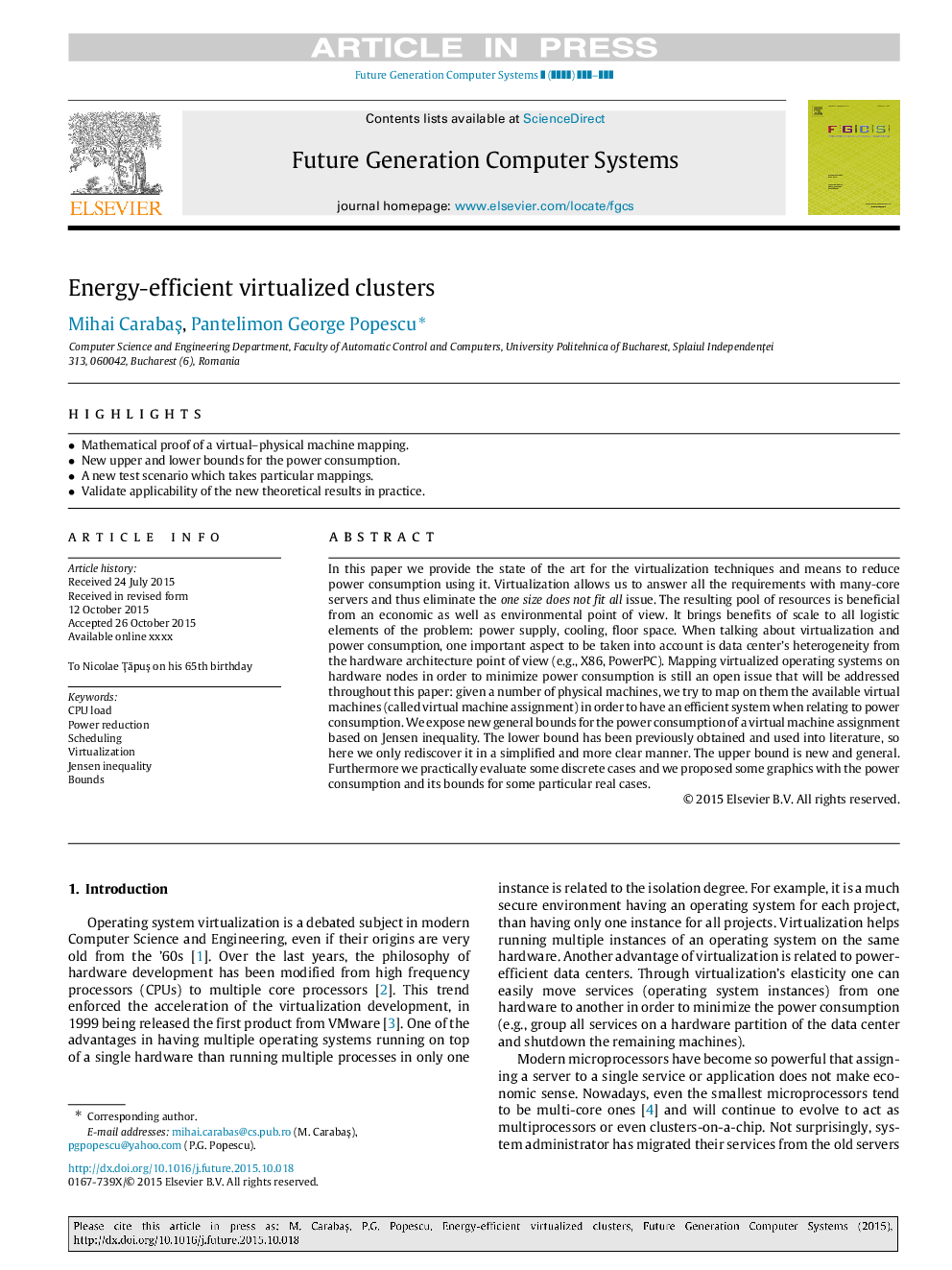| Article ID | Journal | Published Year | Pages | File Type |
|---|---|---|---|---|
| 4950367 | Future Generation Computer Systems | 2017 | 7 Pages |
Abstract
In this paper we provide the state of the art for the virtualization techniques and means to reduce power consumption using it. Virtualization allows us to answer all the requirements with many-core servers and thus eliminate the one size does not fit all issue. The resulting pool of resources is beneficial from an economic as well as environmental point of view. It brings benefits of scale to all logistic elements of the problem: power supply, cooling, floor space. When talking about virtualization and power consumption, one important aspect to be taken into account is data center's heterogeneity from the hardware architecture point of view (e.g., X86, PowerPC). Mapping virtualized operating systems on hardware nodes in order to minimize power consumption is still an open issue that will be addressed throughout this paper: given a number of physical machines, we try to map on them the available virtual machines (called virtual machine assignment) in order to have an efficient system when relating to power consumption. We expose new general bounds for the power consumption of a virtual machine assignment based on Jensen inequality. The lower bound has been previously obtained and used into literature, so here we only rediscover it in a simplified and more clear manner. The upper bound is new and general. Furthermore we practically evaluate some discrete cases and we proposed some graphics with the power consumption and its bounds for some particular real cases.
Related Topics
Physical Sciences and Engineering
Computer Science
Computational Theory and Mathematics
Authors
Mihai CarabaÅ, Pantelimon George Popescu,
